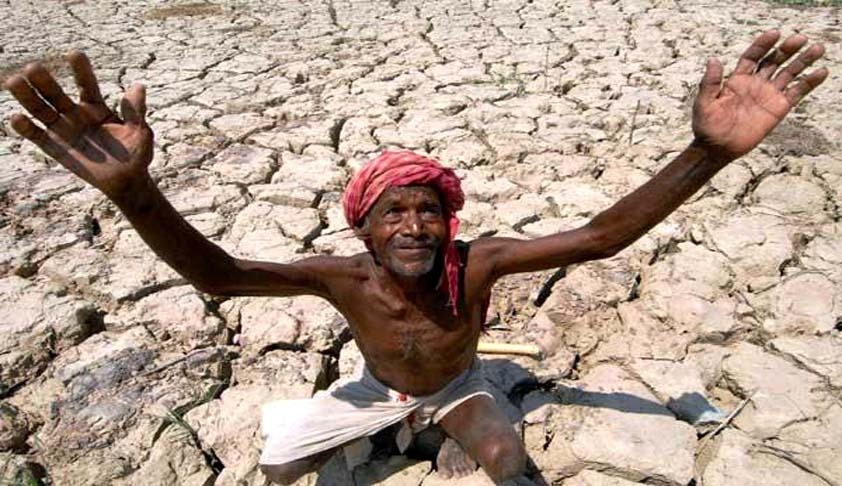Drought management involves planning, monitoring, and implementing strategies to mitigate the effects of drought on water availability, agriculture, ecosystems, and communities. It focuses on reducing vulnerability, improving water-use efficiency, and building long-term climate resilience. Understanding Drought Drought is a prolonged period of insufficient rainfall leading to water shortages. It affects drinking water, food production, livelihoods, and ecosystems. Types of Drought: 1. Meteorological Drought: Below-average rainfall over a specific period. 2. Agricultural Drought: Reduced soil moisture affecting crop production. 3. Hydrological Drought: Decreased surface water (rivers, reservoirs) and groundwater. 4. Socioeconomic Drought: Disruption of livelihoods due to water scarcity. Impacts of Drought 1. Agricultural Impacts: • Crop failure and yield reduction. • Livestock mortality due to fodder and water scarcity. 2. Environmental Impacts: • Degraded soil quality and desertification. • Loss of biodiversity and ecosystem imbalance. 3. Economic Impacts: • Income loss for farmers and rural workers. • Increased costs for water supply and food imports. 4. Social & Health Impacts: • Migration due to water scarcity and food insecurity. • Waterborne diseases due to poor hygiene and unsafe water. Strategies for Drought Management 1. Drought Preparedness & Early Warning Systems: • Establish drought monitoring systems (rainfall patterns, groundwater levels). • Use satellite data and community observations for real-time drought tracking. 2. Water Conservation & Efficiency: • Rainwater Harvesting: Collect and store rainwater for domestic and agricultural use. • Groundwater Recharge: Implement recharge wells and percolation tanks. • Drip Irrigation & Micro-Irrigation: Reduce water use in agriculture by 30-60%. 3. Watershed Management: • Soil & Water Conservation: Build contour bunds, check dams, and farm ponds. • Afforestation: Plant drought-resistant trees to improve soil moisture retention. 4. Drought-Resilient Agriculture: • Crop Diversification: Encourage drought-tolerant crops (millets, legumes). • Agroforestry: Integrate trees with crops to protect soil and conserve moisture. • Soil Health Management: Use organic mulching and bio-fertilizers to retain moisture. 5. Community-Based Drought Management: • Village Water Security Plans: Engage communities in local water resource management. • Capacity Building: Train farmers on water-efficient practices and drought mitigation. Government Initiatives for Drought Management (India) 1. Integrated Watershed Management Programme (IWMP): Focuses on drought-proofing through land and water conservation. 2. National Adaptation Fund for Climate Change (NAFCC): Supports climate-resilient agricultural practices. 3. Mahatma Gandhi National Rural Employment Guarantee Act (MGNREGA): Provides labor for water conservation and drought-proofing works. 4. Pradhan Mantri Krishi Sinchayee Yojana (PMKSY): Promotes water-use efficiency through micro-irrigation. 5. Fodder Security: National Fodder Mission ensures fodder availability during droughts. Drought Mitigation Technologies 1. Desalination Plants: Convert saline water to freshwater in drought-prone coastal areas. 2. Remote Sensing & GIS: Monitor drought patterns and assess water availability. 3. Soil Moisture Sensors: Help farmers optimize irrigation and conserve water. 4. Bioengineering Solutions: Use vegetative barriers and grass strips for erosion control. Community-Led Drought Management Approaches 1. Participatory Groundwater Management (PGWM): Community involvement in groundwater mapping and monitoring. 2. Drought Resilience Committees: Local bodies to plan and implement drought response. 3. Farmer Field Schools: Share best practices in water conservation and drought-resistant farming. Steps for Effective Drought Management 1. Risk Assessment & Mapping: Identify drought-prone areas and assess vulnerabilities. 2. Action Plan Development: Create Drought Mitigation Plans at village, district, and state levels. 3. Community Engagement: Foster local participation in decision-making and implementation. 4. Monitoring & Evaluation: Regularly track drought indicators and adapt strategies accordingly. Long-Term Solutions for Drought Resilience 1. Integrated Water Resource Management (IWRM): Coordinate water use across sectors. 2. Climate-Smart Agriculture: Implement climate-adaptive technologies and practices. 3. Policy Advocacy: Encourage government investment in drought-proofing infrastructure.


